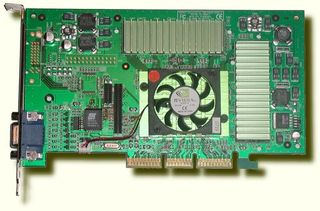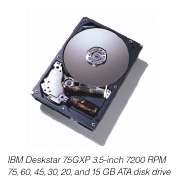The Tom's Hardware Guide Power Box
The Memory Of The Power Box
Intel is bitterly complaining about reviews that are using Athlon-systems with AMD760 chipset and then PC2100 CL2 DDR-memory, beating Pentium 4 platforms in virtually every benchmark. It is correct that right now there isn't any PC2100 DDR-SDRAM with a CAS-latency of only 2 available yet. However, I found out that Micron/Crucial's PC2100 CL 2.5 DDR-SDRAM runs 100% reliable at extremely fast memory timing settings, including a CAS-latency of 2. The Power Box is equipped with two 128 MB DIMMs of the above-mentioned memory, summing up to 256 MB in total. The memory timing settings in the BIOS of MSI's K7 Master S were 8-8-4-2-2-2-2.
The Graphics Card Of The Power Box

This decision was any easy one. As long as NVIDIA's upcoming new 3D-chip with the code name 'NV20' is not available, the fastest 3D-card is clearly equipped with NVIDIA's GeForce 2 Ultra. I was actually using a reference card, but any GeForce 2 Ultra card on the market would do. I also decided against the overclocking of this graphics card, because the system was supposed to be a solid and reliable performer.
The Hard Drive Of The Power Box

In this first Power Box article I thought it would be sensible to use an IDE hard drive. Right now our power box is equipped with IBM's DeskStar 75GXP DTLA-307075. With ATA100-support, a maximum sustained data transfer rate of 37 MB/s, an average seek time of only 8.5 ms and a capacity of 75 GB it is currently the best IDE-drive available. I can already hear the complaints why the Power Box does not come with a SCSI-160 hard drive although its motherboard has got an onboard SCSI-160 adapter. The second edition of the power box will be quipped with a 15,000 RMD SCSI drive and 'NV20', but until then the Deskstar 75GXP will do just fine.
Stay on the Cutting Edge
Join the experts who read Tom's Hardware for the inside track on enthusiast PC tech news — and have for over 25 years. We'll send breaking news and in-depth reviews of CPUs, GPUs, AI, maker hardware and more straight to your inbox.
Current page: The Memory Of The Power Box
Prev Page The Motherboard Of The Power Box Next Page Other ComponentsMost Popular

